Island life: A note on the traditional foodways of Shetland & Orkney.
Island life: A note on the traditional foodways of Shetland and Orkney.
1. Climate may confer culinary destiny…
Things have changed. A passage from Marian Armitage hits the point hard. In Shetland Food and Cooking, she offers the offhand note that there “was no tradition of making white bread in Shetland as wheat was not grown.” (Armitage 207) At least as late as the medieval period, there was little grain of any kind. In Shetland, according to Annette Hope, “the cereal crop was inadequate,” although her contention that dried fish was “a useful substitute for bread” would appear counterintuitive. (Hope 52)
Shetlands, Orkneys; little island chains isolated in their northern sea, nearly but not quite as bound in terms of cultural heritage to Scandinavia as Britain. After all, the Norse ruled these lands as recently as 1471. (Hope 272-73)
Given their hardscrabble economy, harsh climate, short growing season and rugged terrain, the traditional foodways of these outposts are bound to display the limitations of narrow range, or do they? In some respects they do.
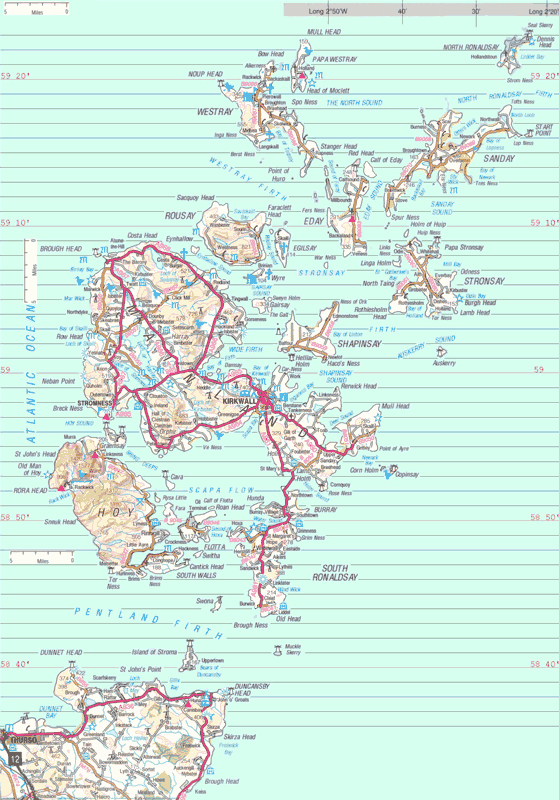
The vegetables historically available in the northern islands were limited to kale, which the inhabitants have grown at least as early as the seventeenth century; potatoes; turnip; occasionally new cabbage; and a limited stock of foraged mushrooms along with a proportionally small amount of dried marrowfat peas. (Armitage 121; see Stout)
The Shetlands did not sustain much fruit, whether cultivated or wild, either. Armitage identifies only rhubarb (technically, as she notes, a vegetable), blackcurrants, gooseberries and wild “hill berries.” These last also are known as black crowberries elsewhere and according to Armitage “grow among heather in the late summer and early autumn,” although in fact crowberry plants themselves are a species of heather. They are among the few berries that can grow in a cold, harsh northern climate like that of the islands and their range spans the subarctic northern hemisphere.
The variety of foodstuffs historically available in the Orkneys was, apparently, even more limited. In 1925 Jessie Saxby provided the “Forward” to Margaret Stout’s Cookery For Northern Wives. It remains the definitive record of traditional island foodways. Saxby explains that Stout published her recipes because “ordinary cookery books deal chiefly with dishes whose ingredients are usually beyond the reach of our cottagers.”
“Their crofts,” Saxby maintains,
“supplied them with potatoes, cabbage and turnip: but no one showed them how to grow variety [sic] of vegetables. Fruit they had none. Butcher meat was seldom obtainable. Groceries were meagre in variety and uncertain in supply.” (Stout ix)
Milk and milk products served as an essential source of protein and Shetland butter was traditionally renowned, but there is, as Armitage maintains, “no major history of cheese making in Shetland” (Hope 149; Armitage 13), although the great Marian McNeill found otherwise in the Orkneys during the 1920s, when “[f]resh curd, fried in butter,” also was “a popular farmhouse tit-bit.” The Orkney cheese she describes is a sort of farmer’s, or perhaps more accurately crofter’s, cheese aged for less than two weeks. “This cheese,” according to McNeill, “is a staple article of diet in Orkney…. Keep buried in oatmeal until required.” (McNeill 283)

Kale, and more kale.
2. …but culture and creativity matter too.
In subtle respects, notwithstanding these constraints, islanders have demonstrated considerable imagination in varying the traditional diet.
Consider baking. Island cooks took their staple grains, oats, bere (an ancient, coarse strain of barley), occasionally rye, and potatoes, to fashion a creative range of biscuits and breads, sometimes lightened with a measure of wheat imported at dear cost. “There are,” as Armitage writes of the Shetlands, “as many recipes for bannocks as people who make them.” (Armitage 216)
Bannocks are something like pancakes cooked on a girdle, a flat griddle found all over Scotland for centuries. They may be made with a variety of grains alone or in combination, may be savory or sweet, with or without a trace of spice, and may or may not include dried fruit and other flavorings. At its simplest a bannock consists only of flour, baking soda, milk or, better, buttermilk, and salt. Its simplicity belies its perfection.
As Armitage, who grew up in the Shetlands, recalls, those potatoes, or “tatties, “really are a staple. I cannot remember a day as a child when they were not eaten.” All kinds of traditional Shetland dishes incorporate them and the islanders have cultivated at least five distinct varieties of their own. (Armitage 122, 123)
Throughout most of Scotland, in this respect an anomaly in northern Europe, pork traditionally was disdained, even feared by the superstitious, as somehow satanic. (Perkins) Shetland and Orkney in turn were anomalous within Scotland. The islanders allowed their legions of pigs to forage in winter, and Orkney if not Shetland developed its own recipes for pork. (Hope 154)
Orkney Pork and Kale, originally based on pickled pork and often made with cabbage or any other green despite the name, “is not found elsewhere in Britain,” and Hope for one ascribes its island existence to the influence of the Norse. (Hope 298)
The islands also developed their own breed of small, hardy cattle, raised a lot of sheep, and supported a lot of game, principally deer, rabbit and a variety of waterfowl. Fish, oceanic and freshwater as well as shellfish, abounded as well. These exceptional ingredients formed the basis for a number of indigenous dishes.
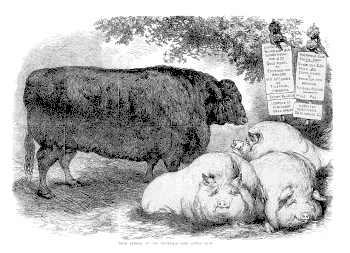 As Saxby wrote with admiration of Orcadian cooks, “they managed to turn out wholesome, if plain meals.” (Stout ix) Original ones too; according to Armitage, clapshot, now found all over Scotland, is “an originally Orcadian mixture of shappit (mashed) neeps,” or turnips, “and tatties.” (Armitage 123) Hope goes so far to claim it as “what amounts to their national dish.” (Hope 210)
As Saxby wrote with admiration of Orcadian cooks, “they managed to turn out wholesome, if plain meals.” (Stout ix) Original ones too; according to Armitage, clapshot, now found all over Scotland, is “an originally Orcadian mixture of shappit (mashed) neeps,” or turnips, “and tatties.” (Armitage 123) Hope goes so far to claim it as “what amounts to their national dish.” (Hope 210)
Despite publishing recipes almost plangent in that plainness, bereft even of very nearly all herbs and even spice, Stout herself does not depict nearly so austere a scene. Frugality, she thinks, should not be confused with hardship. Stout compiled “the recipes peculiar to Shetland, Orkney and the North of Scotland” to
“serve a double purpose: that of diffusing the knowledge required for the preparation of simple and wholesome dishes and of awakening interest in the manifold uses to which our forebears put every particle of foodstuff available.”
Nonetheless the old culinary ways made for “‘lean days’ in the eyes of the present generation.” (Stout xiv, xiii) The recipes, she thinks, were “in danger of passing away” but worthy of preservation not just as historical anomalies but in their own right. It therefore bears noting that, as Stout recognizes, by 1925 “imported foodstuffs” had radically diversified the dishes produced in Shetland kitchens.
“Time,” she writes, “has wrought a complete change in our dietary [sic], in some ways for the worse, in some ways for the better.” In any event it is difficult to imagine otherwise given the presence by the beginning of the twentieth century of the massive Royal Navy installation at Scapa Flow, the anchorage for the Grand Fleet entrusted with the defense of the United Kingdom against the Kaiser’s High Seas Fleet during the First World War and later for the Home Fleet against the Kriegsmarine during World War II.
Before her time, according to Stout, “generation after generation of housewives evolved such a wide variety of dishes that there was no suspicion of leanness there in the eyes of the contented folk who knew not the allurements of our imported eatables, provided that the year was a fruitful one.” (Stout xiii)
3. A fishy business.
Cookery predates Fergus Henderson by nearly eight decades except that the precursor is even more inclusive, going beyond ‘nose to tail’ to encompass everything from spine to nipple. In Cookery For Northern Wives, Stout records a recipe for roast udder; and no less than eighteen others include fish liver, among them Flackies, Krolls, Muggies, Hakka Muggies, Krappin Muggies, Prog and Stap. Fish liver, it hardly needs noting, is a commodity nearly never found in other cookbooks.
One exception: The eccentric, not to say bizarre, Traditional Recipes of the British Isles from 1951 compiled by Nell Heaton. Another: McNeill. In her landmark Scots Kitchen from 1929, she associates the use of fish livers only to the Shetlands:
“In Shetland, where they are much used, a special utensil called a pannabrad (Isl. Panna, kettle, and brad, melting,) is used for melting fish livers, and the oil obtained is stored for winter use.”
She also identifies eleven names for fish liver dishes from A Glossary of the Shetland Dialect. (McNeill 154)
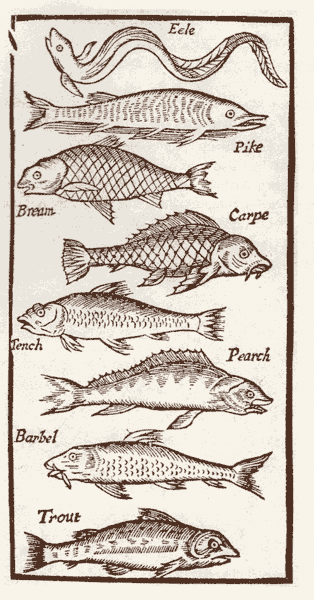
In terms of this somewhat freakish fondness for the fishiest flavored part of the fish, geography was, historically, destiny. “In the remote islands of Orkney and Shetland,” as Hope observes, “a number of unusual recipes evolved. The reason lies in the early history of haaf fishing [see the Notes], before the introduction of shipboard freezing facilities.”
Necessity and frugality intersected to stoke an outlier appetite:
“It was not possible to get fresh cod from Shetland to the mainland of Scotland--it all had to be salted and dried; and the fishermen began the process at sea by removing heads, roes, livers, and other internal organs before the catches reached the curing stations. These items were not discarded; they were the perquisites of the sailors, and ways to cook them form an important part of Orkney and Shetland culinary tradition.”
Hope describes a number of these recipes. “Liver-bannock was [note the use of the past tense] a sort of sandwich made by baking bannocks with livers between them--a refined version, it may be supposed, of the raw livers placed between two slices of bread, wrapped in paper, and sat upon by the ship’s captain in the wheelhouse…. ”
Landsmen scooped potatoes to fill them with fish liver and cover with pastry for baking in the ashes of a fireplace. The Krappin Muggie also described by McNeill? It was a sort of marine haggis, a cod stomach stuffed with liver, flour and spice but for baking rather than steaming. (Hope 88)
4. The language of island foodways.
Less unorthodox Shetland offerings if not names: Hoonska, or the plainest imaginable black pudding devoid even of its standard seasoning of allspice; Stoorandrink, a warm mixture of oatmeal and swats, that is, new ale or beer (encyclopedia.com); Tar-Tin-Purrie, a mixture of kale and potatoes akin to colcannon; Tivlach, “a thick cake of coarse meal” (Stout 50); Uncle Henry Pie made with a simple filling of cod and onions layered with sliced potatoes; Vivda, as Stout explains
“is mutton dried without salt in a skjo, which is a roughly built stone hut with slits to admit the wind for the purpose of drying fish and fresh mutton.” (Stout 27)
Whipkull is an uncooked sweet custard made with cream, egg yolk, sugar and rum. It is quite good. “In Shetland, a whole range” of other dairy dishes also once existed, “with strange Nordic names.” Coagulated milk whipped to the thickness of cream for eating with rhubarb was called Strubba; “Blaud was whey strained off buttermilk, considered at its best at the onset of fermentation, when it had a slight and agreeable fizz.” Condensed milk laced with cinnamon and sugar, “an extravagant dish for special occasions,” was called Kloks, while Klabba was the word for a junket made variously with rennet or butterwort juice (see the Notes). (Hope 175-76)
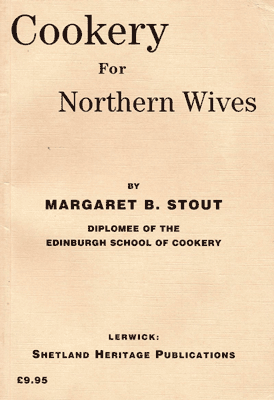
All these wonderful words, and many others also inflected with Norse, only add to the appeal of the dishes they describe, and yet Stout takes no interest in the descriptions. These remarkable examples of evocative dialect go unremarked in Cookery For Northern Wives.
The creative thrift of the islanders extends to technique. ‘Burstin,’ a traditional Orcadian term and item, is made by toasting barley in a pot beside the fire, then grinding it to make either porridge or variations on barley water and other beverages. (encyclopedia.com) It may have been ubiquitous in the northern isles: Stout lists it as an ingredient for these preparations but never describes how to make burstin itself. Snoddie is a thick bannock that earns a different name because it is “cooked among the ashes.” (Stout 50)
Some island names are misnomers. Potted head, for instance, is made with simmered bone, hock and oxtail but no head. It is surpassing plain and dispenses even with the usual butter, a lighter potted meat bound only by its own gelatin. (Stout 32) Not a dish, as a Scottish memsahib might say of something Eurasian, to be despised, not at all.
Elsewhere Stout offers island versions of Scots stalwarts; simplified sea pie, sheep’s head broth, skirlie and stovies. Her brown stew consists only of beef and onion browned in dripping, carrot and turnip thickened with a little flour, simmered in water and seasoned with salt and pepper.
Cookery For Northern Wives includes no instruction for haggis, a bit of a surprise, but does describe how to make sausages from the lights, or lungs, that are a traditional element of that most famous Scots pudding.
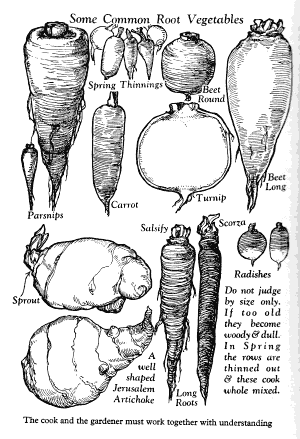
5. An island icon.
Despite all the simplicity, spice was not absent from the traditional diet of Orcadians and Shetlanders. Stout’s kedgeree gets a dose of curry, a flavor absent from a lot of the older English recipes, although oddly enough she uses fresh instead of smoked fish. And ironically, the most iconic of island inventions in culinary terms relies on a tangle of lavish spice.
We should not jump to conclude that island cooks took a detour from their customary economy in creating saucermeat, or sassermaet in Shetland dialect. It is, as Stout explains, made with “poorer cuts of meat, generally beef, minced and seasoned with” allspice, cinnamon, clove, ginger, mace, black and white pepper, and salt. (Stout 25) If clapshot is the national dish of Orkney, saucermeat is the Shetland equivalent.
Colman Andrews describes it as “peculiar, but not bad at all” (Andrews 113), although it is better than that. Because he worries that “the aromatic spices in straight saucermeat” may be “overwhelming,” Andrews reduces the proportion of spice to meat provided by Stout which, in reality, defeats the purpose of the preparation and renders his version inauthentic. He also contends that the meat is mixed with fat as well as spice, but Stout does no such thing.
The historically lavish level of spice--and salt--in saucermeat served a practical purpose, to preserve the meat before the era of refrigeration in earthen jars for months. The spicy mix could be used to add flavor to other ingredients during the winter months when fresh seasonings were not possible to obtain. Stout reflects the practice in providing a recipe for saucermeat bronies, which mix the spiced meat with more ground beef, breadcrumb, egg and onion. (Stout 25) Andrews reproduces her recipe using his blander saucermeat as “a means of savoring some of the flavor with less pungency.” (Andrews 114)
- A love of place.
Unlike Andrews, Armitage is an unequivocal advocate of saucermeat. In her Shetland Food and Cooking, she reproduces the Stout formula for it, identical other than the conversion to metric measurement, and replete with a curious anomaly. Stout and so Armitage specify a spice mixture that includes “allspice” as well as “Jamaica pepper.” They are, however, the same thing.
Armitage uses the spiced mince to make Shetlandized Scotch eggs and clatch which, she maintains in a rather confusing manner, “is similar in principle to shepherd’s pie--minced meat underneath mashed potatoes, but there the similarity ends,” without explaining how it does end. (Armitage 190)
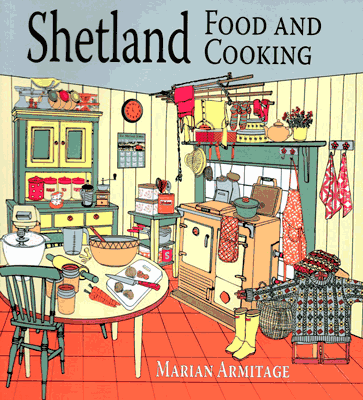
She also stuffs tomatoes with saucermeat, and if a stuffed tomato does not appear particularly authentic in terms of Shetland tradition, then the dish has a lot of company in Shetland Food. Armitage is candidly cheerful about her sometime disregard for tradition; one recipe begins with the disclaimer that it has “no real Shetland connection.” She covers what Shetlanders like herself cook today--ranging from ‘Armenian Lamb’ and ‘Barbecued Meat’ to other alien standards including cheese d’Artois, bobotie, ceviche, frangipane, lasagna and rosti--as much as it covers the traditional cooking of Shetland. In that respect it resembles most of the few other cookbooks written in connection with both Orkney and Shetland.
That said, Armitage’s work represents an affectionate, and appealing, culinary portrait of her birthplace, and unlike the other island cookbooks does contain a number of recognizably insular recipes, or at least recipes that build upon the island tradition. One of them even had been overlooked by the redoubtable Margaret Stout Herself. “Sheeps’ puddeens,” as Armitage writes,
“are a very traditional Shetland speciality. It is [sic] the stomach bag of a sheep stuffed with a slightly sweet onion and fruit mixture, sewn closed and then simmered for many hours.” (Armitage 247)
Nor did Stout record anything like the saucermeat clatch.
Krappen, a fishhead stuffed with peppered fish liver and oatmeal, and the stap described by McNeil, a mixture of fish and fish livers, are indisputably authentic. Unaccountably, however, even though she provides four photographs depicting the preparation of krappen, and warns her reader “carefully” to stuff the head “because of the ferocious sharpness of the teeth,” Armitage omits a detailed recipe for either dish, perhaps on the assumption that nobody other than the Oldest School Shetlander will take the dare on them. (Armitage 93)
Mackerel with a rhubarb stuffing is one of Armitage’s construction projects, a creative use of two classic island ingredients that builds upon the classic British combination of oily fish and rhubarb or gooseberry sauce.
Another dish of Shetland character if not pedigree is her variation on a “great Scandinavian classic, Jansson’s temptation,” which is a sort of gratin made with anchovy, onion and potato bathed in cream. Armitage substitutes salt herring (she cures her own) for the anchovy and replaces half the cream with milk to lighten the dish, now called ‘Jannie’s Temptation,’ although we are not told why. No matter: “Herring,” as Armitage believes, “is synonymous with Shetland” and her simple improvisation is a good use of the northern staple.
Armitage is a generous author, highlighting the contribution of Stout and acknowledging the help of no less than ninety people, and not a single name drop among them. Her “enthusiasm and pride” in Shetland and Shetlanders is infectious, and she deserves a grateful readership there and abroad.
Notes:
-Shetland and Orkney have not gotten much attention from culinary historians or food writers, as in the case of Shetland Armitage recognizes in her introduction to Shetland Food and Cooking. Luminaries who have written about Scottish foodways, including Elizabeth Craig, Theodora FitzGibbon, Jane Grigson and Isobel Christian Johnstone, have ignored the Northern Isles.
-Haaf is one of the smaller islands in Shetland.
-The butterwort is a carnivorous plant, like the Venus flytrap, indigenous to northern Britain. Its juices for digesting insects perform the same transformative function for milk as rennet.
Sources:
Colman Andrews, The British Table: A New Look at the Traditional Cooking of England, Scotland, and Wales (New York 2016)
J. S. Angus, A Glossary of the Shetland Dialect (Paisley 1914)
Marian Armitage, Shetland Food and Cooking (Lerwick 2014)
Elizabeth Craig, The Scottish Cookery Book: The Classic Guide to All That’s Best in Scottish Fare (London 1956)
Theodora FitzGibbon, Traditional Scottish Cookery (London 1980)
Annette Hope, A Caledonian Feast (Glasgow 1987)
Isobel Christian Johnstone writing as Mistress Meg Dods, The Cook and Housewife’s Manual (Edinburgh 1829)
F. Marian McNeill, The Scots Kitchen: Its Lore and Recipes (orig. publ. Edinburgh 1929; reprint Frogmore, St Albans 1976)
Blake Perkins, “A culinary imponderable: The Scottish aversion to pork,” www.britishfoodinamerica.com No. 43 (Winter 2014)
Margaret Stout, Cookery For Northern Wives (Orig. publ. Lerwick 1925; reprint 2013)

